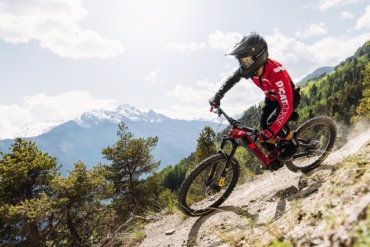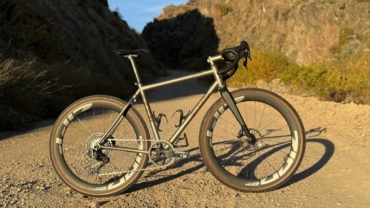There are only a handful of events in the world that showcase the endurance capabilities of the human body like the Tour de France.
Since its inception more than 100 years ago, the tour has been the premier venue for cyclists on the world stage to stamp their names into the history books as conquerers of the roughly 2,000-mile course and its nearly 200 riders.
From mad sprints through flat lands between mountains to lung-busting climbs in the French Alps and Pyrenees, the 24-day trek, which finishes along the Champs-Élysées, always packs hefty helpings of triumph, disappointment, glory, and scandal.
However, figuring out how the tour works can be a challenge for people new to the sport. There are a bunch of jerseys that mean different things, a point system that awards riders who do specific things remarkably well, and other fine details that can significantly impact the race.

How the Tour de France Works
The Tour de France is a 21-stage race that pits teams of riders against each other over 24 days each year, typically in July. This year, all but three days of the tour include a stage. The others serve as rest days to give riders a chance to recover.
Each of the 22 teams participating in the tour includes eight riders who work together to accomplish various goals throughout the race.
Though riders compete in teams, only one rider wins the race. Most riders competing in the Tour de France do not expect to win the race or even a single stage. Their roles are to support their teams’ leaders, whether providing food and hydration or blocking wind by riding in front.
The overall winner of the Tour de France, the winner of the general classification, is the rider with the lowest cumulative time across all 21 stages.
While only one person wins the general classification, there are other titles for riders who specialize in climbing and sprinting, along with honors for the best team and the most aggressive rider.
The Jerseys
The Tour de France awards four conspicuous jerseys to race leaders in each category, including yellow, green, polka dot, and white.

The yellow jersey, or maillot jaune, is the most prestigious jersey of the tour. The leader of the general classification wears the yellow jersey throughout the race. That means the rider with the lowest cumulative time at the end of each day starts the next day in yellow. This jersey can and does change hands multiple times as the race progresses and often favors riders who excel in the mountains and time trials.
The overall winner of the general classification takes home €500,000, or roughly $535,000.

The white jersey marks the best young rider in the general classification. Only riders under 25 years old at the beginning of the year of the race are eligible to wear the white jersey. It functions the same way as the yellow jersey.
The green jersey, commonly known as the points or sprinter’s jersey, goes to the leader in the points category.

The Tour de France awards points toward the green jersey to the first 15 riders who cross the line of intermediate sprints and the finish of each stage. Stage wins earn the most points. Many riders in the hunt for the green jersey will not attempt to win mountain stages. They save energy for the flats so they can rack up as many points as possible without exhausting themselves.
On flat stages, the winning rider earns 50 points for a stage win. Hilly stages come with 30 points, and mountainous stages offer 20, so it pays to win flat days. Each rider behind the leader down to 15th place also earns points in descending order. For example, on a sprint stage, the second-place finisher will earn 30 points, while the rider in 15th place earns two.
Intermediate sprint and time-trial stage wins are worth 20 points a piece.
The polka dot jersey, a flamboyant favorite of many, goes to the best climber. It also is commonly referred to as the “King of the Mountains” jersey. Like the green jersey, the polka dot jersey goes to the rider who has racked up the most points during categorized climbing sections of each stage, of which there are dozens.
Points vary from climb to climb based on the difficulty of each ascent and are separate from overall points toward the green jersey. Climbs are graded from Category 4 to Category 1, along with the “Hors Category,” or super-category, which are too difficult to grade.

The first eight riders who reach the summits of super-category climbs earn points in descending order from 20 to 2. Category 1 climb points go to the first six riders to reach the summit starting at 10 for the winner and falling to 2 for sixth place.
Four riders earn points ranging from five to one for Category 2 climbs. The first two riders to summit Category 2 climbs earn two points each, and the first rider to summit a Category 4 climb earns one point.
Riders can hold multiple jerseys at the same time. If that happens, the leading rider wears the more prestigious jersey, and the others go to the rider in second place.
Last year, Tadej Pogacar of UAE Team Emirates walked away with the yellow, white, and polka dot jerseys, while Mark Cavendish snagged the green jersey.
Riders without the honor of a jersey still have other awards to chase, including individual stage victories, the most aggressive rider prize, and the best team classification.
The most aggressive rider wears a red number plate, while the best team rides with yellow number plates.
The Tour de France Course
The vast majority of the race happens throughout France, though it sometimes begins in nearby countries for a couple of stages before crossing over into France.
This year, the tour begins in Copenhagen on July 1 and includes stages in Belgium, Switzerland and, of course, France. By the race’s end, riders will have covered approximately 2,068 miles.
Each stage brings unique challenges that each rider and team must navigate to keep themselves at or near the front of the pack. Tour organizers categorize stages as flat, hilly, or mountainous.
There are two time-trial stages in the Tour de France in 2022. The first kicks off the event on July 1, and the second comes the day before the race’s finish in Paris. These stages involve riders starting one at a time at set intervals over a short distance.
The first-time trial that opens the tour is just more than 8 miles long. The last one stretches out to a little more than 25 miles.

Each rider races alone against the clock to jockey for the position as the fastest rider. Time trial specialists can pull back significant time against their competition by putting the hammer down during these events.
Riders use customized specialty bikes and apparel to reduce aerodynamic drag as much as possible to ensure they save every millisecond. These courses typically involve rolling terrain where riders stay on the pedals from start to finish.
All other stages of the tour begin with a mass start where most riders stick together in a large group, known as the peloton. Whether across flat, hilly, or mountainous stages, riding in the peloton helps riders save energy for the opportune moment when they might be able to attack.
The longest stage of the tour in 2022 is nearly 137 miles. The shortest outside of the two time trials comes on the final day at 72 miles.
Flat stages, also called sprint stages, don’t have much elevation gain, but they make up for it in explosive endings. The flat stages of the Tour de France cater to sprinters, who usually spend the entire day tucked safely in the peloton to protect themselves from wind resistance.
They save their energy for the last part of the stage when they rely upon teammates to get them into an excellent position to erupt from behind and surge to the finish line.

Mountain stages test cyclists who specialize in climbing and descending. These stages include thousands of feet of elevation gain on extremely steep grades, followed by white-knuckle descents that often see riders hit 40 mph or higher.
Due to the varied nature of these stages, the field of athletes often becomes considerably stretched out, with leading riders working in small groups to push ahead as others lose steam and drop back.
Top riders can use mountain stages to pull away from the rest of the field and gain valuable time toward their overall general classification time. Additionally, the top three finishers of each stage other than time trials earn 10-, 6-, and 4-second time bonuses toward their overall general classification time.

How to Watch the Tour de France
The Tour de France will air on NBC and NBC Sports networks. NBC’s Peacock service and NBC Sports will stream live coverage from Phil Liggett and Bob Roll. Cyclists Jens Voigt and Van Velde will also contribute to the commentary.








